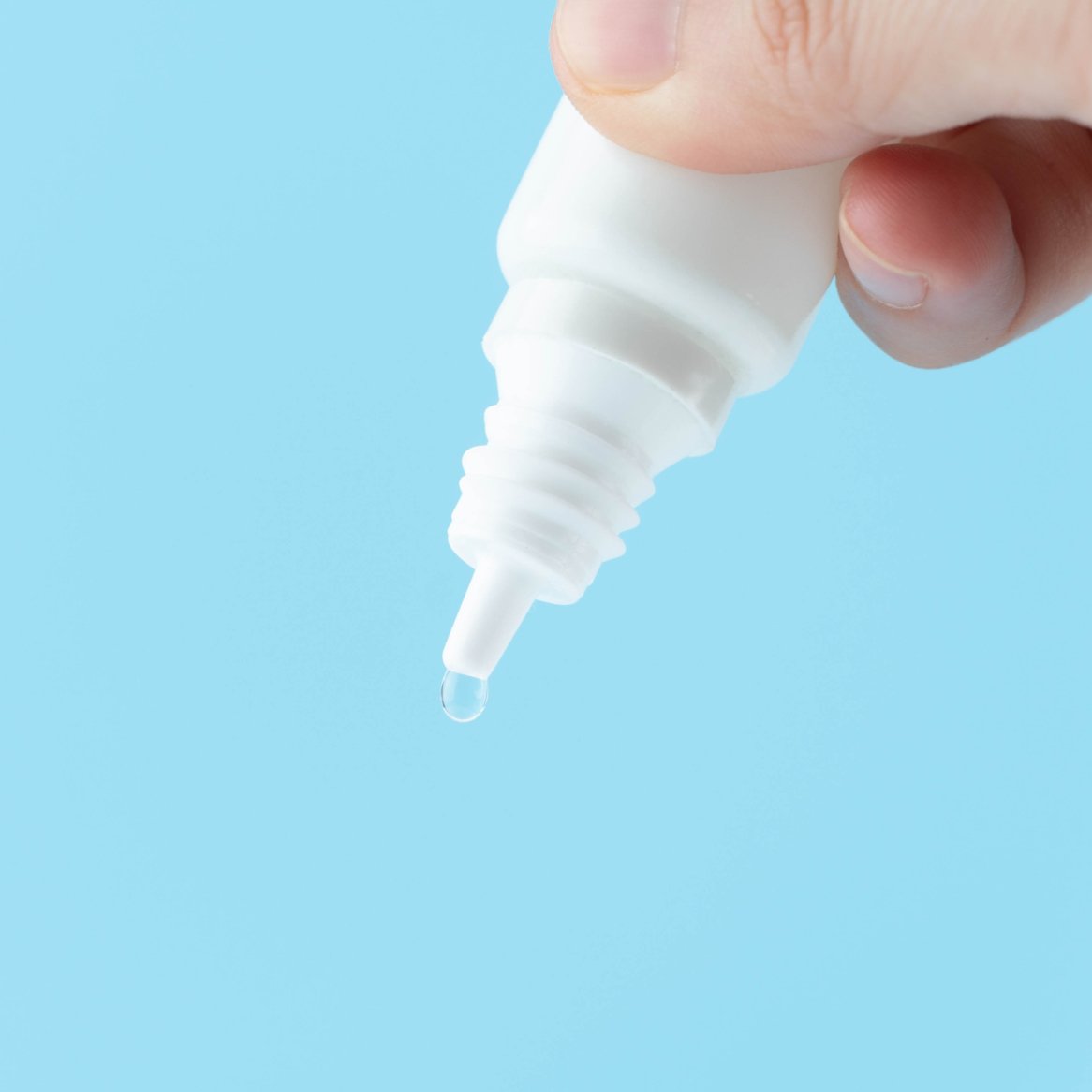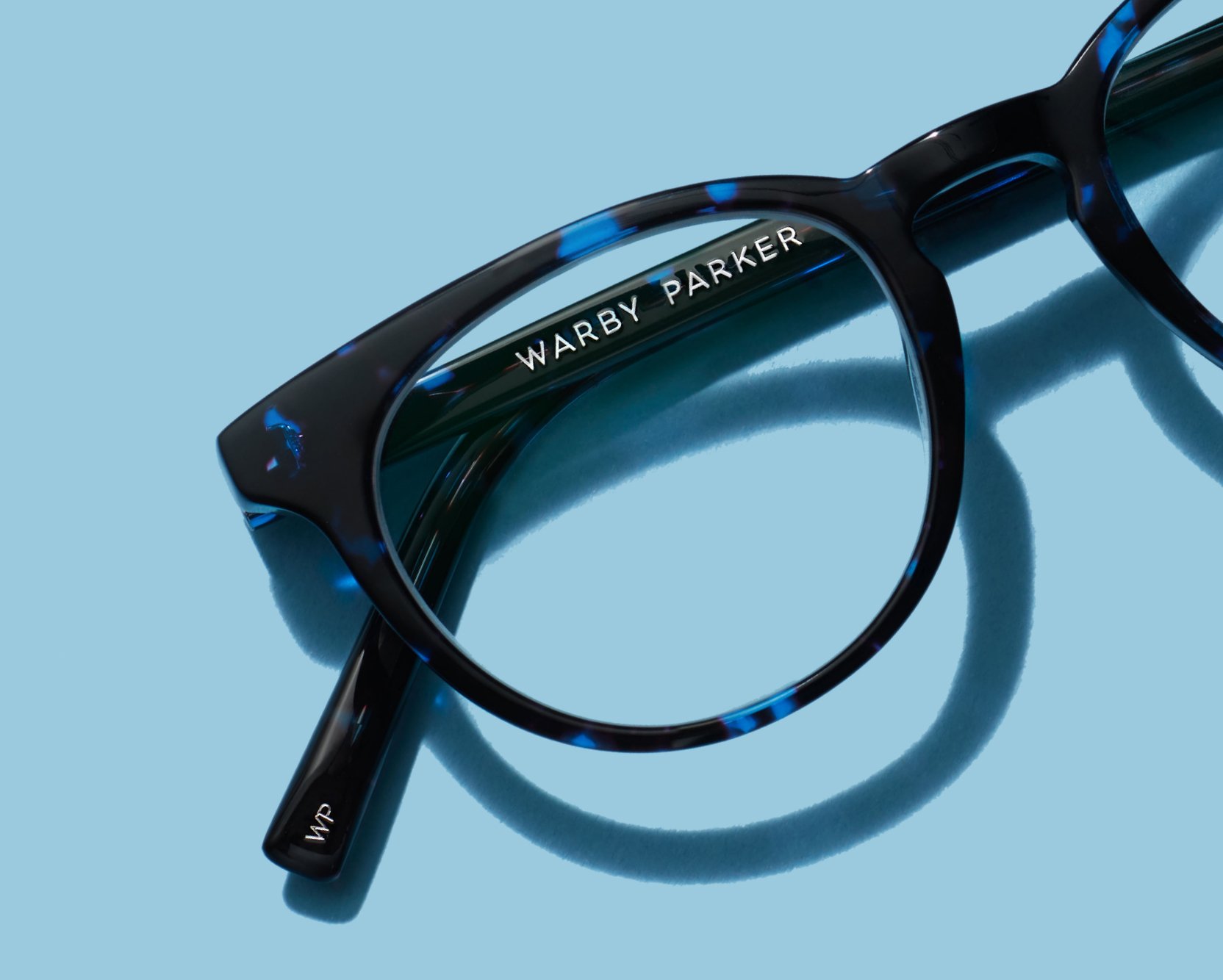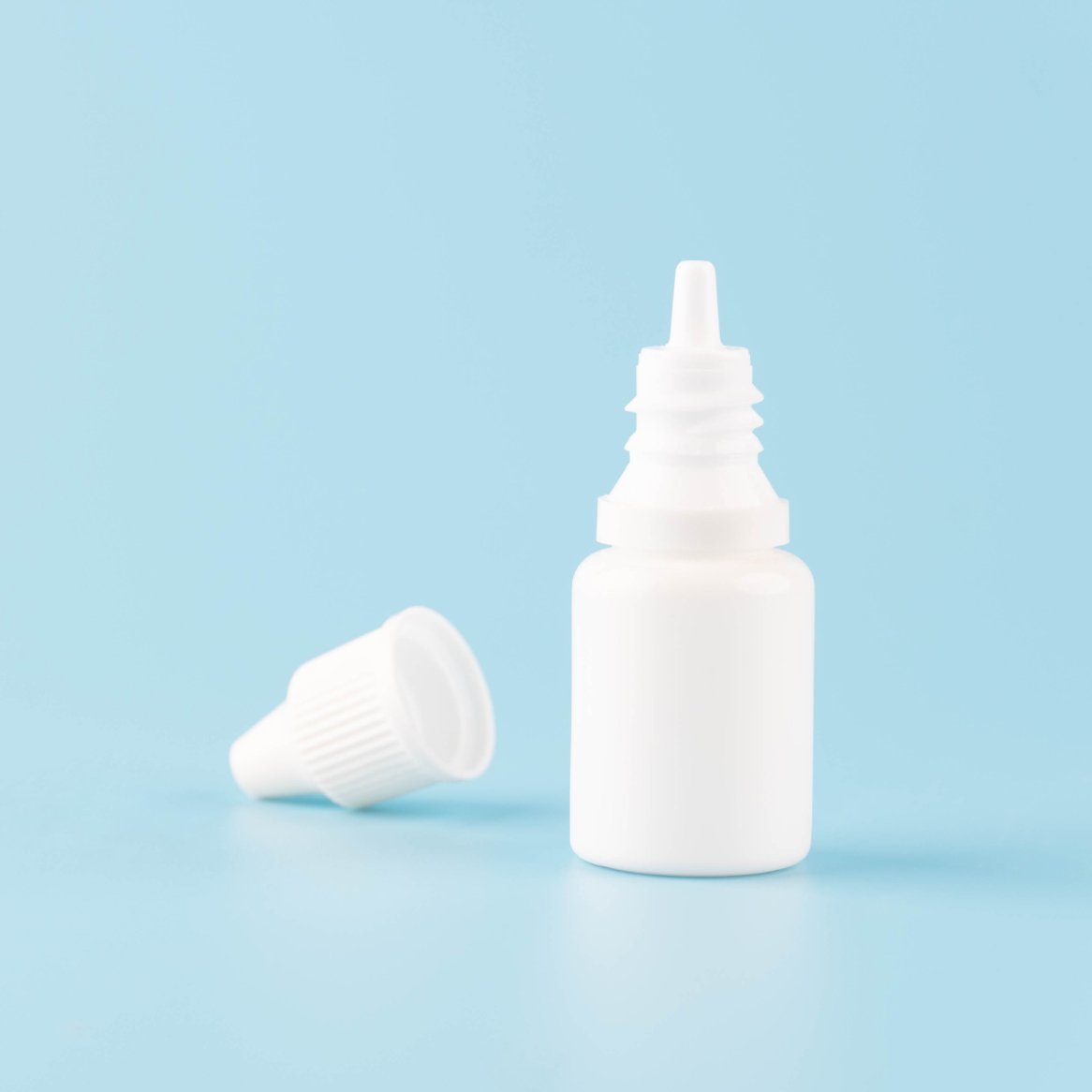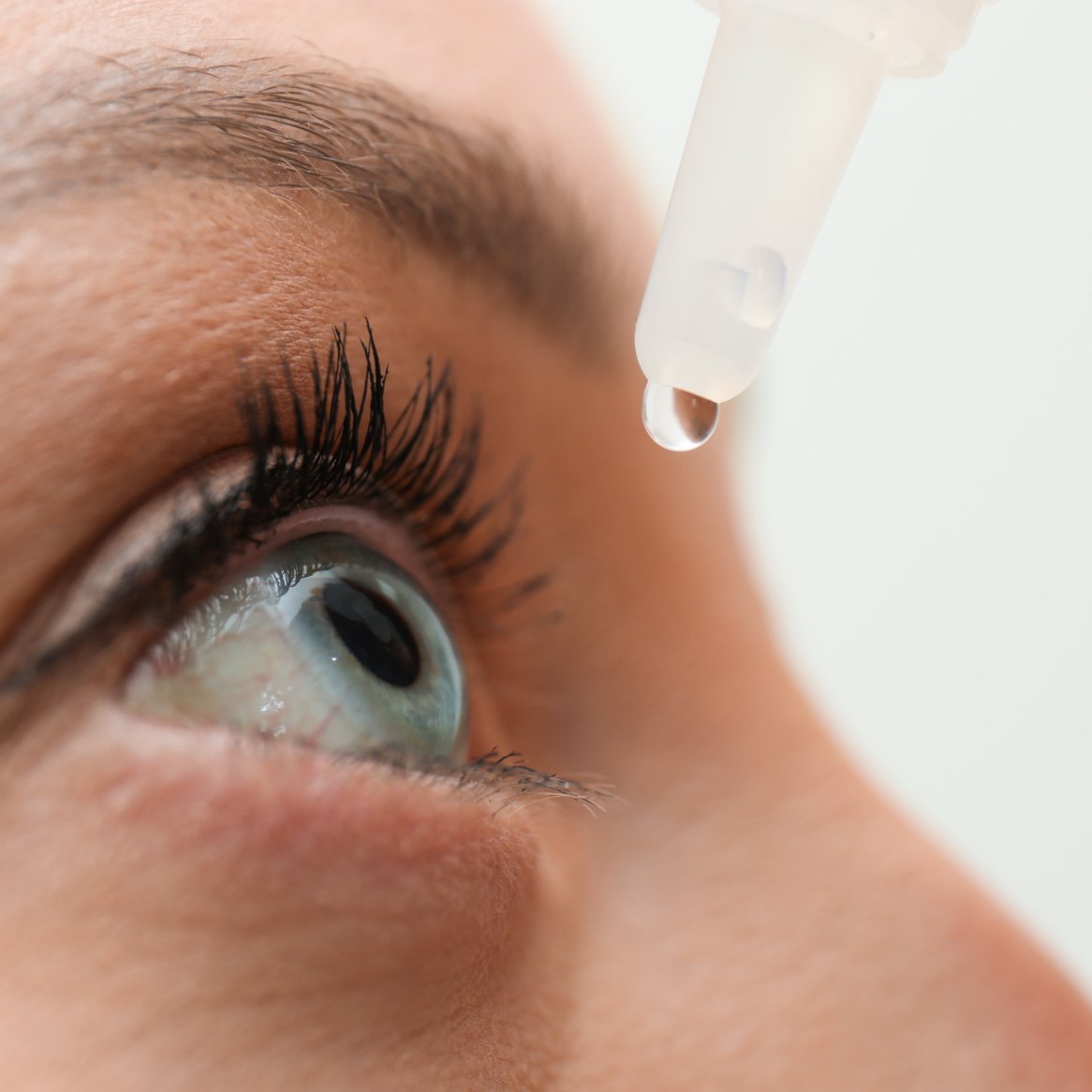Any type of eye drops can be harmful if they’re not used properly. Most of the time, eye drops are meant to be a temporary solution for eye symptoms. Improper use of eye drops or using the wrong type of drops for your needs could do more harm than good.
If you feel like you’re constantly reaching for eye drops or have been using them daily for an extended period of time, then it’s important to check in with an eye doctor. After a comprehensive eye exam, your doctor can help determine the underlying cause of your symptoms and provide the best recommendations for managing them.
In the meantime, we’ve put together this helpful guide to explain some key points to understanding eye drops. We’ll discuss different types of eye drops, some safety tips, overuse issues, and potential risks when using eye drops.
What Are Eye Drops For? Understanding the Different Types
There are so many different types of eye drops out there. It can be especially confusing if you’re experiencing more than one symptom—how do you know which kind to get?
This is why it’s so important to talk to your eye doctor. Using the wrong type of drops isn’t safe—it may make your symptoms feel worse or could lead to overuse.
- Allergy eye drops: These drops contain antihistamines for soothing allergy-related eye symptoms.
- Anti-redness drops: These drops have decongestants in them to reduce swelling of blood vessels and temporarily reduce redness.
- Artificial tears: These lubricating drops help moisturize dry eyes.
To learn more about choosing eye drops for dry eyes, head over to this handy article: Eye Drops for Dry Eyes: Which Type Is Best for You?
Are Eye Drops Safe?
Yes, when used properly, eye drops are generally safe to use. But using them properly is definitely the key—always use eye drops as directed, whether they’re prescription or over-the-counter.
When it comes to safety, here are a few considerations to keep in mind:
- Contamination: Do not let the dropper tip touch any part of your eye (including your eyelid) or your fingers. The dropper could easily pick up bacteria and contaminate the bottle.
- Expiration dates: Be mindful of the eye drops’ expiration date, directions and timelines for storage, and how long the drops will last once the bottle has been opened.
- Safety seals: In 2016, the FDA warned against eye drop bottles with loose safety seals—the plastic ring below the lid. A loose safety seal could fall on your eye as you apply drops. If a seal is loose and needs to be removed, take extra precautions (such as wearing gloves or using sterilized instruments) to avoid contamination of the dropper tip.
Are Eye Drops Safe for Contacts?
Not all eye drops can be used with contacts. However, some eye drops are made specifically for use with contacts, and the packaging will clearly state that they’re safe for contact lenses. Some (not all) of these drops are called rewetting drops. (Rewetting drops aren’t the same as contact solution—you shouldn’t put your contact solution directly in your eye.)
If you want to use other drops while wearing contact lenses because your eyes are dry or red, it’s best to check with your doctor first. Drops made to address those issues are meant to not only wet the eyes but heal them as well. The additives that help them perform can be troublesome for your lenses and may cloud your vision or worsen your eye symptoms.
Typically, eye doctors will recommend applying eye drops with contacts removed and waiting 10 to 15 minutes before putting them back in. But again, we recommend talking to your doctor first about your unique situation.
Overuse of Eye Drops: How Much Is Too Much?
It’s best to follow the instructions that come with eye drops. The usual recommendation is to see your doctor if your symptoms persist or worsen for more than 72 hours.
It’s sometimes easy to keep reaching for the bottle when eye drops provide the temporary relief you need. But we’ve said it before, and we’ll say it again: It’s crucial to always use eye drops as directed by the manufacturer and your eye doctor.
How Often Can You Use Eye Drops?
Preservative-free lubricating eye drops are generally considered best for more frequent use, as long as you use them as directed. Many types of preservative-free artificial tears can be used as often as you need them.
Optometrists and ophthalmologists typically say you shouldn’t use eye drops with preservatives more than four times per day. As for allergy drops and anti-redness drops, only use them as directed by your eye doctor.
Is It Bad to Use Eye Drops Every Day?
Unless your eye doctor gives you the green light, using eye drops daily for an extended time is typically not recommended. Most eye drops will state in their instructions to stop using them and consult an eye doctor if your symptoms last more than three days.
If you feel like you need eye drops daily long term, it’s important to discuss with your eye doctor any chronic conditions and follow their recommendations for treatment.
Long-term Side Effects of Eye Drops: The Risks of Overuse
So, what happens if you put too many eye drops in or if you’re using eye drops too frequently? Overusing eye drops comes with the following risks.
Masking Underlying Conditions
Redness-removing eye drops provide temporary relief from symptoms, but they don’t treat underlying eye conditions.
Many different conditions can cause dry, irritated eyes, such as blepharitis, dry eye syndrome, and computer vision syndrome (just to name a few). Eye drops alone won’t solve the root problem causing the symptoms, and leaving eye conditions untreated can lead to further issues.
The Rebound Effect
With an overuse of eye drops that remove redness, symptoms can sometimes worsen rather than get better. Using eye drops for a long period of time may cause your eyes to become dependent on them. When this happens, red, irritated eyes might get even worse when you stop using eye drops—something known as the “rebound effect” or “rebound redness.” This rebounding is often seen with anti-redness drops that contain decongestants.
The Takeaway: Eye Drops Provide Relief, Not a Cure
The key point to remember is that eye drops soothe symptoms temporarily—they don’t eliminate the root cause of your eye symptoms. If you’re experiencing eye symptoms that aren’t going away after a couple of days, see your eye doctor to check for underlying issues and get expert advice for treatment.






